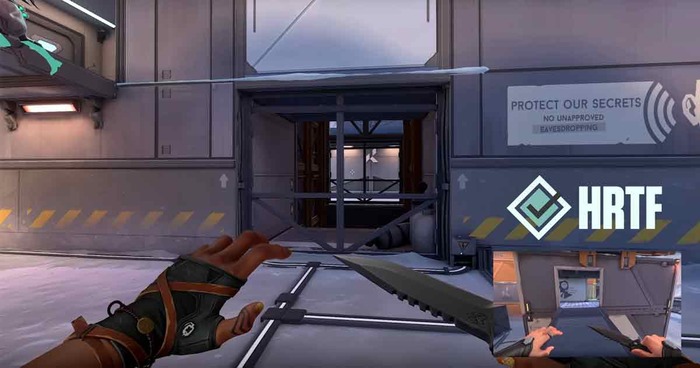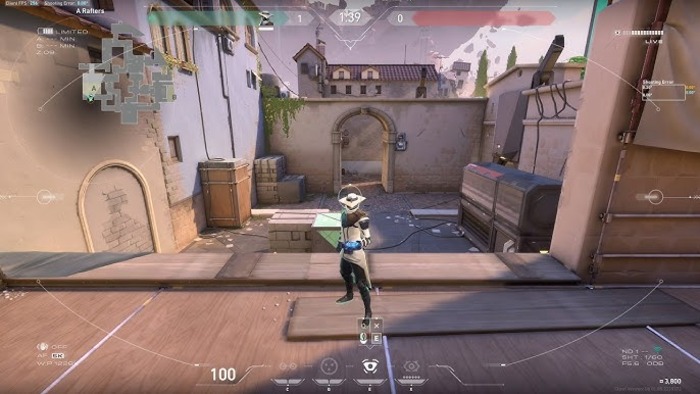What Is HRTF in Valorant and How Does It Work?
HRTF (Head-Related Transfer Function) in Valorant improves your hearing in the game by simulating how sound interacts with your head and ears.
This technology delivers more accurate 3D audio cues, helping you better identify and locate sounds in your environment.
Listen up, Valorant players and audio lovers! Today, we’re exploring a feature that could boost your performance in critical moments: HRTF.
It’s not a new agent ability or hidden weapon—it’s a powerful tool for enhancing your sound experience.
Let’s dive into 3D audio and see how HRTF can give you an edge in intense situations!

How HRTF Affects Audio in Valorant?
HRTF, or Head-Related Transfer Function, improves how audio feels in the game by making it more realistic and spatially accurate.
It mimics how sound waves interact with your head and ears in real life, helping you better identify where sounds come from within the game.
In short, it upgrades your in-game hearing. With HRTF, you don’t just hear sounds; you perceive them as if you were in the game’s world.
Footsteps, gunshots, and ability cues turn into useful information about your surroundings, giving you a strategic advantage.
Why HRTF Is Crucial for Valorant Players?
In Valorant, players use audio to gather crucial information, and many choose HRTF to enhance their sound experience. Here’s why they prefer it:
- Enhanced Directional Awareness: HRTF allows players to accurately identify the direction of sounds, whether it’s above, below, or behind.
- Improved Depth Perception: It helps determine the direction of a sound and how far away it is.
- Competitive Advantage: Precise sound localization can make a critical difference in high-stakes moments, giving players an edge in tense situations.
- Greater Immersion: The technology creates a more realistic and captivating audio experience, making the in-game world lifelike.
- Reduced Audio Fatigue: Processing sounds more naturally reduces the mental effort needed to interpret audio cues, lessening fatigue over time.
- Consistency Across Devices: HRTF provides a consistent experience, regardless of the headphones you’re using.
- Clear Vertical Sound: Instrumental in Valorant’s multi-tiered maps, it helps distinguish sounds from different elevations.

How to Enable HRTF in Valorant
Want to enhance your sound experience in Valorant? Here’s how to enable HRTF:
- Open Valorant and go to the main menu.
- Click on the Settings icon in the top-right corner.
- Navigate to the “Audio” section within the settings.
- Scroll down and locate the “HRTF” option.
- Toggle the switch to activate HRTF.
- (Optional but recommended) Restart the game to apply the changes fully.
- Test it out in the Range or a custom game to familiarize yourself with the new audio.
Tip:
It may feel unfamiliar initially, but with time, many players find that HRTF offers a significant audio improvement once they’ve adapted.
Essential Sound Concepts for Gameplay

When diving into audio settings and sound in the game, you’ll encounter the following terms:
- Immersive Audio: A technique using two microphones to generate a 3D auditory experience.
- Multi-Directional Sound: A method that creates the illusion of sound coming from various angles.
- Dual-Channel Sound: A system that uses two separate audio channels for reproduction.
- Sound Indicators: Key noises that deliver important in-game information, such as movement or weapon reloads.
- Obstructed Sound Simulation: How the game replicates sound being blocked or muffled by nearby objects.
- Audio Composition: The blend of different sound elements in the in-game audio.
- Frequency Control: The act of adjusting the balance between high and low frequencies in the sound.
- Audio Layout: How sounds are positioned and perceived in the listening environment.
- Directional Sound Cues: Noises that appear from a precise location or direction.
- Audio Placement: Arranging sounds in a 3D space within the game environment.
- Volume Difference: The contrast between the loudest and quietest sounds in the game’s audio mix.
- Sound Delay: The time it takes for a sound to travel from its source to the player is crucial for fast-paced gameplay.
Armed with this understanding, you’re ready to enhance your experience in the game.
While sharp accuracy and quick responses are essential, your ability to track hidden enemies or react to movements based on sound is equally critical.
It might take time to adjust to immersive audio techniques, but many players find it offers a significant advantage during intense moments.
Try it out, train your hearing, and your improved sound awareness could power your next impactful move.
Stay alert and let the audio cues guide your success!





